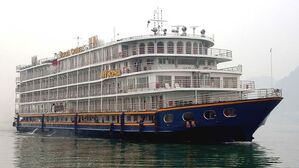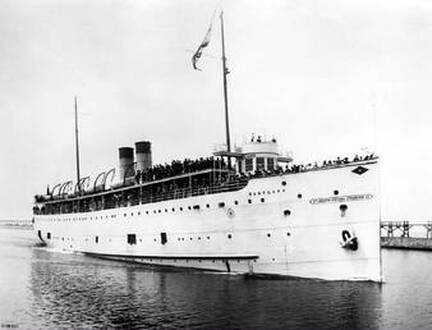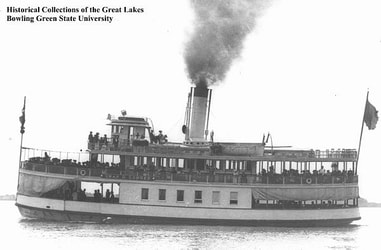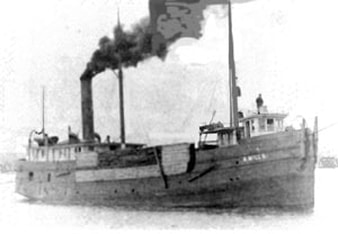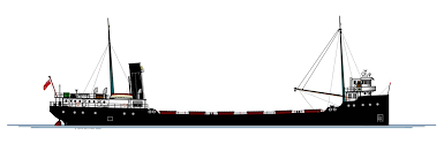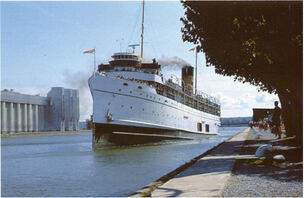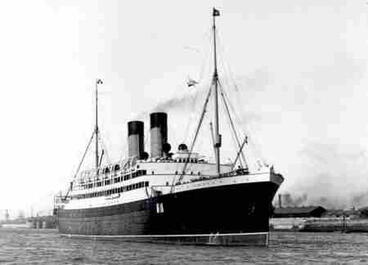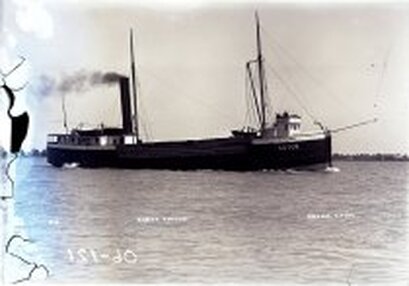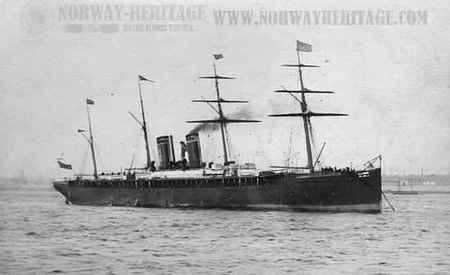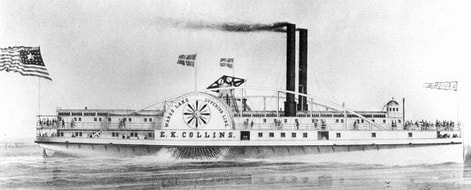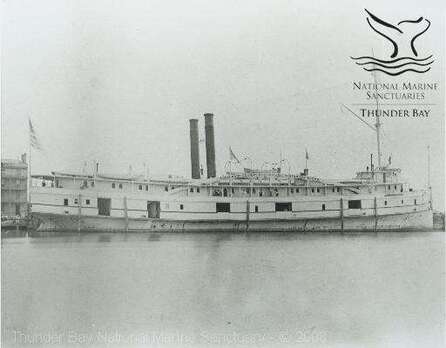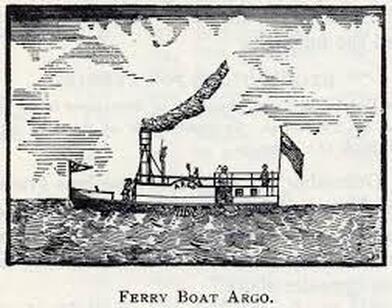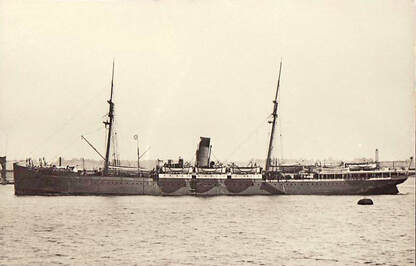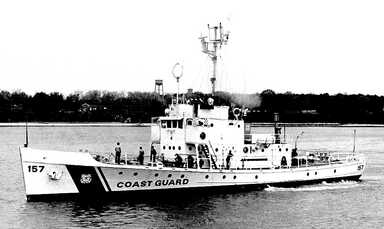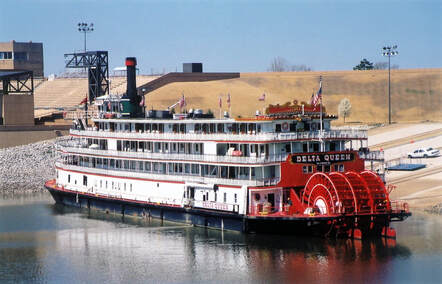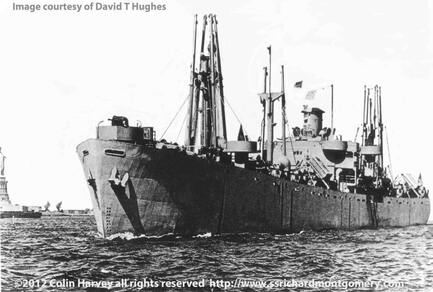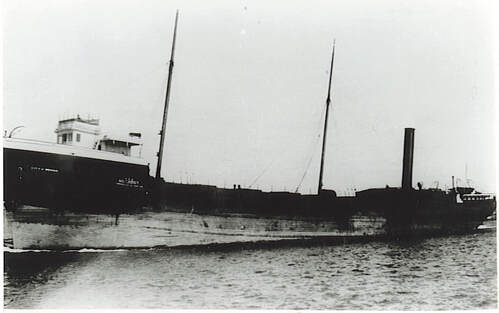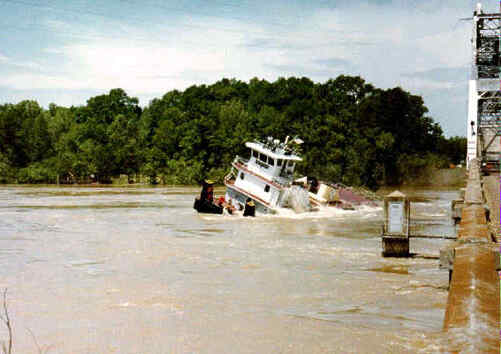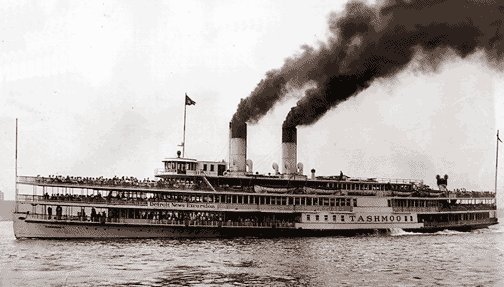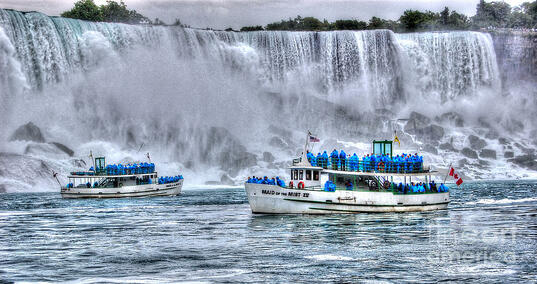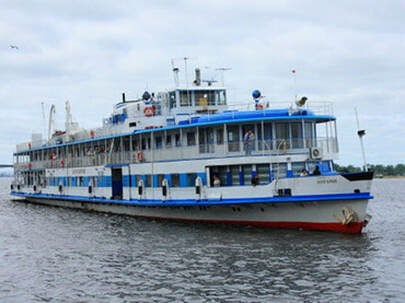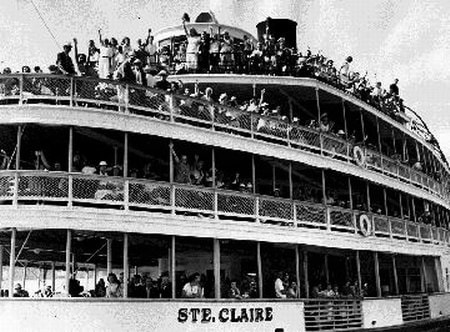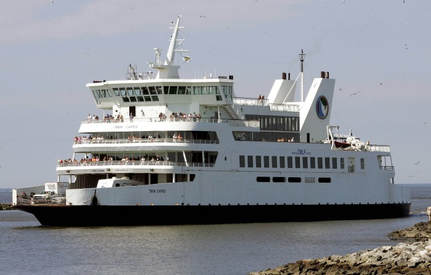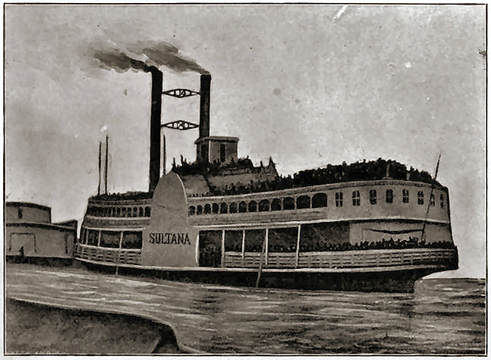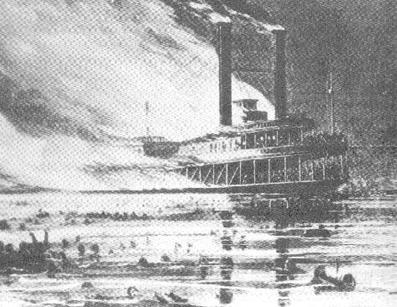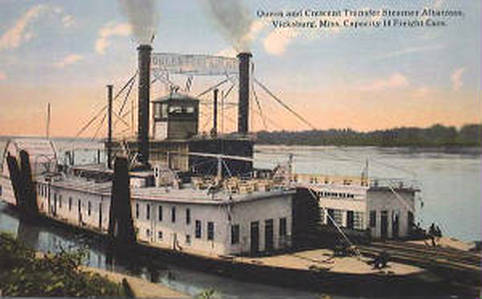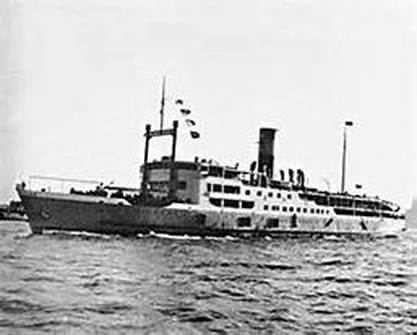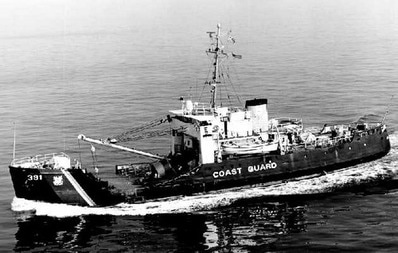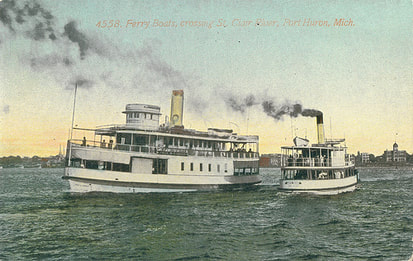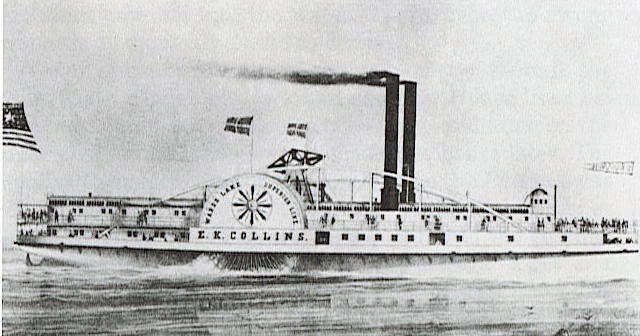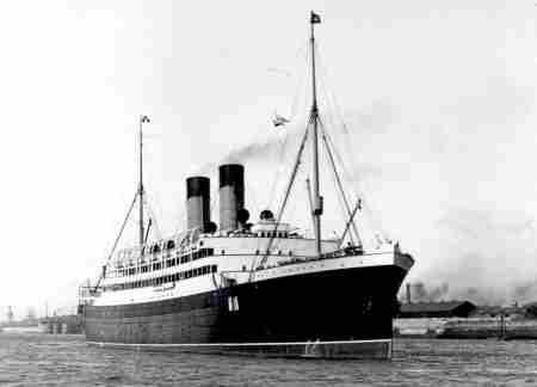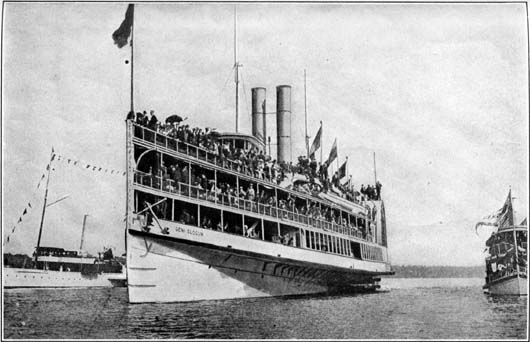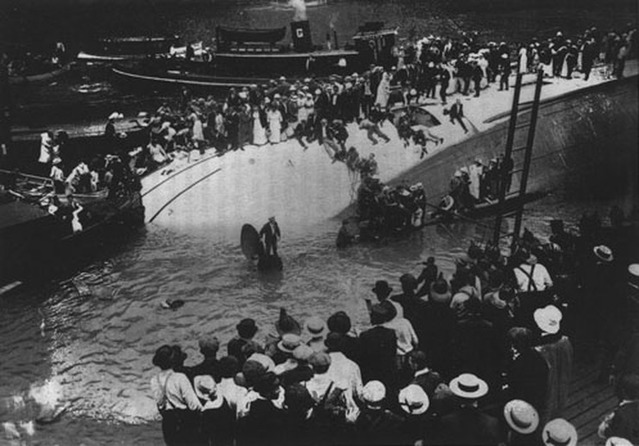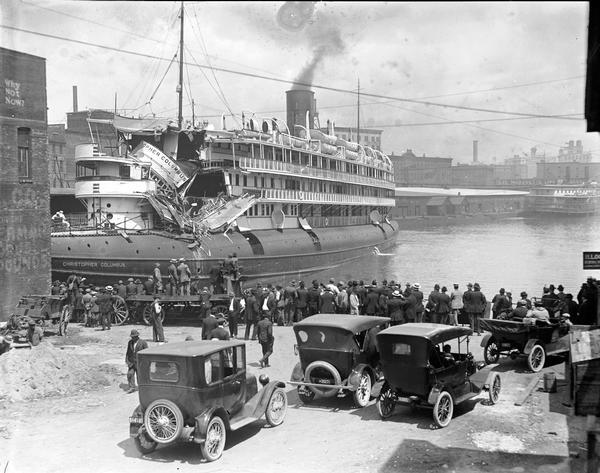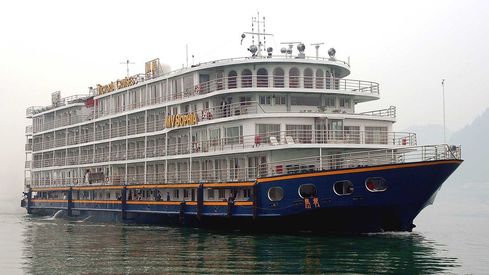River Disasters
Chinese Riverboat Eastern Star Disaster
More than 400 people perished when the Chinese pleasure boat Eastern Star capsized in a freak storm on the Yangtze River on the evening of May 25, 2015 and sank in about 50 feet of water.
The large five-deck, 21-year-old cruise ship, under the command of Captain Zhang Shunwen, was carrying 456 passengers and crew members on what was to have been a scenic river trip lasting several days, from Nanjing to Chongqing. The passengers were mostly elderly, ranging in age from 50 to 80. Most of the passengers were participating in a group tour.
More than 400 people perished when the Chinese pleasure boat Eastern Star capsized in a freak storm on the Yangtze River on the evening of May 25, 2015 and sank in about 50 feet of water.
The large five-deck, 21-year-old cruise ship, under the command of Captain Zhang Shunwen, was carrying 456 passengers and crew members on what was to have been a scenic river trip lasting several days, from Nanjing to Chongqing. The passengers were mostly elderly, ranging in age from 50 to 80. Most of the passengers were participating in a group tour.
The Eastland Horror
The mention of the steamer Eastland in and around Chicago still stirs black thoughts of hundreds of screaming men, women, and children trapped below decks to drown aboard a capsized excursion liner. Those who watched the motion picture The Poseidon Adventure, about a liner overturned by a great tidal wave at sea, might understand what it might have been like for the 2,408 passengers and 72 crew members aboard the Eastland on July 24, 1915, when the vessel tipped on its side and sank in Chicago harbor. Of that number, 835 perished. The disaster still ranks with the sinking of the Titanic, the torpedoing of the Lusitania, and the burning of the steamer General Slocom off New York's Hell Gate as the worst of all marine tragedies. No other wreck on the Great Lakes claimed as many lives.
The mention of the steamer Eastland in and around Chicago still stirs black thoughts of hundreds of screaming men, women, and children trapped below decks to drown aboard a capsized excursion liner. Those who watched the motion picture The Poseidon Adventure, about a liner overturned by a great tidal wave at sea, might understand what it might have been like for the 2,408 passengers and 72 crew members aboard the Eastland on July 24, 1915, when the vessel tipped on its side and sank in Chicago harbor. Of that number, 835 perished. The disaster still ranks with the sinking of the Titanic, the torpedoing of the Lusitania, and the burning of the steamer General Slocom off New York's Hell Gate as the worst of all marine tragedies. No other wreck on the Great Lakes claimed as many lives.
The Miracle of the Conger Explosion
The horror of the blast that wrecked the Port Huron, Michigan ferry Omar D. Conger and killed four crew members on March 26, 1922, caused people at first to overlook the fact that a miracle had happened. The explosion sent pieces of the red-hot boiler flying hundreds of feet through the air in all directions where they left a path of destruction. A second steamship, the Cheboygan, with about two hundred passengers, was only a few hundred feet away and approaching the dock. While people were hurt, the miracle was that only four people died.
The horror of the blast that wrecked the Port Huron, Michigan ferry Omar D. Conger and killed four crew members on March 26, 1922, caused people at first to overlook the fact that a miracle had happened. The explosion sent pieces of the red-hot boiler flying hundreds of feet through the air in all directions where they left a path of destruction. A second steamship, the Cheboygan, with about two hundred passengers, was only a few hundred feet away and approaching the dock. While people were hurt, the miracle was that only four people died.
Last Meal on the Mills
Chief engineer Ephriam J. Moore and his wife, Melissa, of Port Huron, were enjoying a noon lunch together in their cabin aboard the steamer Nelson Mills. The boat was steaming up the St. Clair River, approaching Port Huron, where Melissa planned to get off before the vessel continued on out into Lake Huron. Those were to have been the last moments of a pleasure trip she shared with her husband to Cleveland and back. She didn’t know it, but she was never going to see Port Huron. She was one of two people to die the afternoon of September 6, 1006, in a collision three miles below St. Clair, Michigan.
Chief engineer Ephriam J. Moore and his wife, Melissa, of Port Huron, were enjoying a noon lunch together in their cabin aboard the steamer Nelson Mills. The boat was steaming up the St. Clair River, approaching Port Huron, where Melissa planned to get off before the vessel continued on out into Lake Huron. Those were to have been the last moments of a pleasure trip she shared with her husband to Cleveland and back. She didn’t know it, but she was never going to see Port Huron. She was one of two people to die the afternoon of September 6, 1006, in a collision three miles below St. Clair, Michigan.
Jinx Ship Maine
When fire claimed the steamship Maine on the St. Clair River the night of July 16, 1911, it spelled the end of one of the most unlucky boats ever to traverse the Great Lakes. Sailors may have called it a jinx, or hoodoo ship because of the disasters that plagued its forty-nine-year career. Despite numerous fires, a sinking and one boiler explosion, the Maine continued to rise up like a phoenix from the ashes to sail again until the final fire at Marine City, Michigan.
When fire claimed the steamship Maine on the St. Clair River the night of July 16, 1911, it spelled the end of one of the most unlucky boats ever to traverse the Great Lakes. Sailors may have called it a jinx, or hoodoo ship because of the disasters that plagued its forty-nine-year career. Despite numerous fires, a sinking and one boiler explosion, the Maine continued to rise up like a phoenix from the ashes to sail again until the final fire at Marine City, Michigan.
The Boat That Shot the Rapids
Everybody knows that the canal and locks were built at Sault Ste. Marie in 1855 to allow lake vessels to pass from Lake Superior to Lake Huron. What few people know, however, is that the locks are there to accommodate an eighteen-foot drop in water levels between Lake Superior and the bottom of the Saint Mary Falls. With that much of a drop, one can imagine the rush of water that would result if two of the giant lock gates opened at the same time, allowing a free flow from Superior into the river below. That is what accidentally happened on June 9, 1909, while the passenger liner Assiniboia was standing in the Canadian lock.
Everybody knows that the canal and locks were built at Sault Ste. Marie in 1855 to allow lake vessels to pass from Lake Superior to Lake Huron. What few people know, however, is that the locks are there to accommodate an eighteen-foot drop in water levels between Lake Superior and the bottom of the Saint Mary Falls. With that much of a drop, one can imagine the rush of water that would result if two of the giant lock gates opened at the same time, allowing a free flow from Superior into the river below. That is what accidentally happened on June 9, 1909, while the passenger liner Assiniboia was standing in the Canadian lock.
The Empress Of Ireland Horror
The Canadian liner Empress of Ireland was sunk in a collision with a collier at the mouth of the fog-shrouded St. Lawrence River in the spring of 1914, not long after the Titanic disaster, and it took even more souls to a watery grave with her. Because the ship was not as large, or laden with as many famous people, and because the disaster happened so soon after the Titanic incident and the start of World War I, the story never gained the historical significance it deserved. Few people today even remember that it happened.
The Canadian liner Empress of Ireland was sunk in a collision with a collier at the mouth of the fog-shrouded St. Lawrence River in the spring of 1914, not long after the Titanic disaster, and it took even more souls to a watery grave with her. Because the ship was not as large, or laden with as many famous people, and because the disaster happened so soon after the Titanic incident and the start of World War I, the story never gained the historical significance it deserved. Few people today even remember that it happened.
Ruddy Was a Hero
Coal passer William “Ruddy” Holloran saved the day for his fellow shipmates when fire broke out on the steamer Germanic. It happened about 3:00 AM on November 6, 1904, while the vessel was hard aground at the head of Stag Island, on the St. Clair River near Marine City, Michigan. The Germanic, Capt. James Murphy, had dragged her anchor while waiting out a heavy fog and drifted on the island two days earlier. When tugs couldn’t pull the steamer free, men were put to work shoveling the cargo of coal into the Active, a shallow draft barge, or lighter, tied alongside. The idea was to float the Germanic higher in the water.
Coal passer William “Ruddy” Holloran saved the day for his fellow shipmates when fire broke out on the steamer Germanic. It happened about 3:00 AM on November 6, 1904, while the vessel was hard aground at the head of Stag Island, on the St. Clair River near Marine City, Michigan. The Germanic, Capt. James Murphy, had dragged her anchor while waiting out a heavy fog and drifted on the island two days earlier. When tugs couldn’t pull the steamer free, men were put to work shoveling the cargo of coal into the Active, a shallow draft barge, or lighter, tied alongside. The idea was to float the Germanic higher in the water.
A Dangerous Game
The captain denied it but many witnesses said the new side-wheeled steamer Alaska was racing with the City of Detroit when the seam dome on the Alaska’s boiler blew up. Three crew members were instantly killed and two others fatally scalded in the explosion at about 10:30 AM on September 5, 1879, near the mouth of the Detroit River.
The captain denied it but many witnesses said the new side-wheeled steamer Alaska was racing with the City of Detroit when the seam dome on the Alaska’s boiler blew up. Three crew members were instantly killed and two others fatally scalded in the explosion at about 10:30 AM on September 5, 1879, near the mouth of the Detroit River.
Fire On The E. K. Collins
Canadian furniture-store operator William Bartlett never expected to be a hero. Even Bartlett had to admit that he just happened to be at the right place at the right time, and have a boat available when it was really needed. An estimated seventy passengers and crew members on the burning steamer E. K. Collins needed all the help they could get on the night of Sunday, October 8, 1854. As the fire engulfed the ship, destroying even the lifeboats, the people had no place to go but over the side and into the cold moving waters of the Detroit River. Twenty-one souls perished in the fire, but it could have been much worse.
Canadian furniture-store operator William Bartlett never expected to be a hero. Even Bartlett had to admit that he just happened to be at the right place at the right time, and have a boat available when it was really needed. An estimated seventy passengers and crew members on the burning steamer E. K. Collins needed all the help they could get on the night of Sunday, October 8, 1854. As the fire engulfed the ship, destroying even the lifeboats, the people had no place to go but over the side and into the cold moving waters of the Detroit River. Twenty-one souls perished in the fire, but it could have been much worse.
Deadly Crash on the St. Clair River
Brothers James and Joseph Evans found themselves trapped in the flooded engine room moments after the steamer Milwaukee drove its bow into the side of the propeller Lac La Belle. The accident happened early in the evening of Nov. 23, 1866 on the St. Clair River, about three miles above the flats where the river empties into Lake St. Clair. Joseph Evans said the water rushed into the Lac La Belle's engine room with such force that he and his brother dropped what they were doing and dashed for the ladder leading to the main deck.
Brothers James and Joseph Evans found themselves trapped in the flooded engine room moments after the steamer Milwaukee drove its bow into the side of the propeller Lac La Belle. The accident happened early in the evening of Nov. 23, 1866 on the St. Clair River, about three miles above the flats where the river empties into Lake St. Clair. Joseph Evans said the water rushed into the Lac La Belle's engine room with such force that he and his brother dropped what they were doing and dashed for the ladder leading to the main deck.
Strange Steamer Argo
The first riverboat plying between Detroit and For Gratiot, a place located near where Port Huron, Michigan now stands, was the Argo, an odd-looking craft built by Capt. John Burtis of Amherstburg, Ontario, in 1828. Huck Finn, a fictional character created by American author Mark Twain, would have liked the Argo. It was basically a motorized raft. D. B. Harrington, editor of the old Port Huron Commercial, was a passenger on the Argo’s first trip up the Detroit and St. Clair Rivers to Fort Gratiot. He said the vessel was built on two large hollowed-out pine logs, joined together. It had a sharp bow and square stern. A deck was built on top of the logs, and a four-horsepower steam engine that ran side-wheels was mounted on the deck.
The first riverboat plying between Detroit and For Gratiot, a place located near where Port Huron, Michigan now stands, was the Argo, an odd-looking craft built by Capt. John Burtis of Amherstburg, Ontario, in 1828. Huck Finn, a fictional character created by American author Mark Twain, would have liked the Argo. It was basically a motorized raft. D. B. Harrington, editor of the old Port Huron Commercial, was a passenger on the Argo’s first trip up the Detroit and St. Clair Rivers to Fort Gratiot. He said the vessel was built on two large hollowed-out pine logs, joined together. It had a sharp bow and square stern. A deck was built on top of the logs, and a four-horsepower steam engine that ran side-wheels was mounted on the deck.
Liner Cyril Sunk In Collision On The Amazon
The passenger and cargo liner Cyril had obviously seen better days before its final owners, the Booth Line, put it in service hauling rubber from Manasus, at the upper regions of the Amazon River, Brazil, to England. It was while steaming down that 1,000-mile-long stretch of the Amazon that the Cyril and another Booth ship, the Anselm 2, collided near Belem, at the estuary or entrance gate to the mighty river on September 5, 1905.
The passenger and cargo liner Cyril had obviously seen better days before its final owners, the Booth Line, put it in service hauling rubber from Manasus, at the upper regions of the Amazon River, Brazil, to England. It was while steaming down that 1,000-mile-long stretch of the Amazon that the Cyril and another Booth ship, the Anselm 2, collided near Belem, at the estuary or entrance gate to the mighty river on September 5, 1905.
Eleven Die In Coast Guard's Cuyohoga Disaster
The U.S. Coast Guard's Commanding Officer Donald K. Robinson was faulted by a board of inquiry for the 1978 collision that sank his command, the Cutter Cuyohoga, and took 11 sailors to the bottom of Chesapeake Bay with it. It was about 10 p.m. on October 20 when the cutter was struck broadside by the Argentine coal freighter Santa Cruz II at the mouth of the Potomac River. The 521-foot bulk carrier rammed the smaller 125-foot cutter on the starboard side, between amidships and the stern. Witnesses said the cutter was dragged in reverse for a minute, when as it fell away from the big freighter it rolled on its side and sank so fast that the 11 crew members who perished were trapped below deck and could not escape.
The U.S. Coast Guard's Commanding Officer Donald K. Robinson was faulted by a board of inquiry for the 1978 collision that sank his command, the Cutter Cuyohoga, and took 11 sailors to the bottom of Chesapeake Bay with it. It was about 10 p.m. on October 20 when the cutter was struck broadside by the Argentine coal freighter Santa Cruz II at the mouth of the Potomac River. The 521-foot bulk carrier rammed the smaller 125-foot cutter on the starboard side, between amidships and the stern. Witnesses said the cutter was dragged in reverse for a minute, when as it fell away from the big freighter it rolled on its side and sank so fast that the 11 crew members who perished were trapped below deck and could not escape.
Delta Queen; American Historical Dilemma
If ever there was a riverboat to be loved and romanticized it has to be the Delta Queen. This beautifully painted and well maintained vessel holds the honor of being the last steam-powered overnight passenger boat plying the great rivers of North America. Designated a National Historic Landmark in 1989, owners and lovers of this 285-foot-long may still be afloat but federal laws are making its continued existence, other than a moored floating museum, problematic.
If ever there was a riverboat to be loved and romanticized it has to be the Delta Queen. This beautifully painted and well maintained vessel holds the honor of being the last steam-powered overnight passenger boat plying the great rivers of North America. Designated a National Historic Landmark in 1989, owners and lovers of this 285-foot-long may still be afloat but federal laws are making its continued existence, other than a moored floating museum, problematic.
The Richard Montgomery, A Disaster Waiting To Happen
The Richard Montgomery was a Liberty Ship, one of hundreds manufactured on a high-track production line during World War II to replace a fleet of cargo ships falling prey to the German U-Boat wolf packs on the North Atlantic. There was a flaw in the design of the Liberty Ships, a weakness in the keel that caused some of their hulls to crack when hitting an obstruction. When it happened, the vessel could break in two and sink. The 440-foot Montgomery, with a crew of 50 plus 30 gunners, steamed from Philadelphia with 6,000 tons of munitions on board, headed for London for use by the US Army Air Force. The ship struck a sand bar on the Thames River, and sank with its cargo still unloaded. There it rests yet today, tons of dynamite that could explode without warning.
The Richard Montgomery was a Liberty Ship, one of hundreds manufactured on a high-track production line during World War II to replace a fleet of cargo ships falling prey to the German U-Boat wolf packs on the North Atlantic. There was a flaw in the design of the Liberty Ships, a weakness in the keel that caused some of their hulls to crack when hitting an obstruction. When it happened, the vessel could break in two and sink. The 440-foot Montgomery, with a crew of 50 plus 30 gunners, steamed from Philadelphia with 6,000 tons of munitions on board, headed for London for use by the US Army Air Force. The ship struck a sand bar on the Thames River, and sank with its cargo still unloaded. There it rests yet today, tons of dynamite that could explode without warning.
Stinking Of The City of Genoa
The people in Port Huron, Michigan and Sarnia, Ontario, long remembered facing one another across the St. Clair River, and enduring the putrid smell of fermenting grain for weeks in 1911. That was because the grain freighter City of Genoa was left left partly sunk there from a collision. Fog was blamed for the crash that sent the wooden hulled steamer to the bottom in 50 feet of water at about 5 a.m. on Aug. 26.
The people in Port Huron, Michigan and Sarnia, Ontario, long remembered facing one another across the St. Clair River, and enduring the putrid smell of fermenting grain for weeks in 1911. That was because the grain freighter City of Genoa was left left partly sunk there from a collision. Fog was blamed for the crash that sent the wooden hulled steamer to the bottom in 50 feet of water at about 5 a.m. on Aug. 26.
Cahaba Survives Incredible Dive Under A Flooded Bridge
The photographs of the event, a mute testimony to a virtual miracle for river tow barges, have been circulating on the World Wide Web although the incident happened 50 years ago. It was April 28, 1979, and the M/V Cahaba, commanded by Capt. Jimmy Wilkerson, was bringing two coal laden barges down the flooded Tombigbee River in Mississippi when the lift operator at Rooster Bridge failed to respond to a signal to raise the bridge. The vessel literally dropped down under the bridge and then re-floated, upright and intact on the other side. The captain was still on the bridge.
The photographs of the event, a mute testimony to a virtual miracle for river tow barges, have been circulating on the World Wide Web although the incident happened 50 years ago. It was April 28, 1979, and the M/V Cahaba, commanded by Capt. Jimmy Wilkerson, was bringing two coal laden barges down the flooded Tombigbee River in Mississippi when the lift operator at Rooster Bridge failed to respond to a signal to raise the bridge. The vessel literally dropped down under the bridge and then re-floated, upright and intact on the other side. The captain was still on the bridge.
Adventures on the Steamer Tashmoo
When I was a child I recall an aunt talking about an excursion on the popular passenger liner Tashmoo about a week before the vessel struck a rock and sank on the Detroit River. It happened during moonlight excursion, with about 1,400 passengers on board, on June 18, 1936. The vessel was chartered that evening by the Pals Club of Hamtramck. The cruise took the boat south to Sugar Island near Grosse Ile, then as it was turning for the trip home, struck a submerged rock at the mouth of Sugar Island Channel. The passengers, who felt the shock, were told there was engine trouble. But it was worse than that, Water was pouring through a hole in the hull faster than the pumps could handle it. The engine room crew found itself stoking the boiler fire while standing in waist deep water. The ship was sinking.
When I was a child I recall an aunt talking about an excursion on the popular passenger liner Tashmoo about a week before the vessel struck a rock and sank on the Detroit River. It happened during moonlight excursion, with about 1,400 passengers on board, on June 18, 1936. The vessel was chartered that evening by the Pals Club of Hamtramck. The cruise took the boat south to Sugar Island near Grosse Ile, then as it was turning for the trip home, struck a submerged rock at the mouth of Sugar Island Channel. The passengers, who felt the shock, were told there was engine trouble. But it was worse than that, Water was pouring through a hole in the hull faster than the pumps could handle it. The engine room crew found itself stoking the boiler fire while standing in waist deep water. The ship was sinking.
Niagara’s Maids-Of-The-Mist
Visitors to Niagara Falls are familiar with the Main-of-the-Mist, small excursion vessels operating from both sides of the Niagara River that carry passengers on daring up-close trips to the foot of the falls and back down stream. The vessels always appear to be in view, and many visitors to the falls have enjoyed boarding the vessel and taking the ride. There are two Maid-of-the-Mists making the trip these days. They are Maid’s V and VI, two relatively modern steel boats with powerful diesel engines. But the history of small excursion vessels bearing the name dates back to 1846 when the first Maid-of-the-Mist was launched as a ferry, carrying people to and from the U.S. and Canadian sides of the Niagara River.
Visitors to Niagara Falls are familiar with the Main-of-the-Mist, small excursion vessels operating from both sides of the Niagara River that carry passengers on daring up-close trips to the foot of the falls and back down stream. The vessels always appear to be in view, and many visitors to the falls have enjoyed boarding the vessel and taking the ride. There are two Maid-of-the-Mists making the trip these days. They are Maid’s V and VI, two relatively modern steel boats with powerful diesel engines. But the history of small excursion vessels bearing the name dates back to 1846 when the first Maid-of-the-Mist was launched as a ferry, carrying people to and from the U.S. and Canadian sides of the Niagara River.
Bulgaria Disaster On Volga River
It began as a family pleasure cruise on Russia’s broad Volga River but when rough weather struck, one engine failed and the 56-year-old cruise ship Bulgaria took on a list, the excursion turned into a nightmare. In the end the ship turned on its side and sank, carrying 122 people, many of them children, to their deaths. The Bulgaria was on a trip from Bulgar to Kazan in the Kansko-Ustinovsky District with over 200 passengers and crew members aboard when the disaster occurred on June 10, 2011. Of the total, 122 died.
It began as a family pleasure cruise on Russia’s broad Volga River but when rough weather struck, one engine failed and the 56-year-old cruise ship Bulgaria took on a list, the excursion turned into a nightmare. In the end the ship turned on its side and sank, carrying 122 people, many of them children, to their deaths. The Bulgaria was on a trip from Bulgar to Kazan in the Kansko-Ustinovsky District with over 200 passengers and crew members aboard when the disaster occurred on June 10, 2011. Of the total, 122 died.
Historic Boblo Boat St. Clair Gutted by Fire
When fire was first noticed on the moored old Boblo steam boat at Detroit on July 6, 2018, it was already too late to save the century-old wooden vessel. The call came in shortly before midnight and by the time fire fighters arrived the fire was already consuming the upper decks and fire fighters spokesman Mike Nevin said it was unsafe for anyone to board. They battled the fire with hoses from the dock and from a local fire boat.
When fire was first noticed on the moored old Boblo steam boat at Detroit on July 6, 2018, it was already too late to save the century-old wooden vessel. The call came in shortly before midnight and by the time fire fighters arrived the fire was already consuming the upper decks and fire fighters spokesman Mike Nevin said it was unsafe for anyone to board. They battled the fire with hoses from the dock and from a local fire boat.
Sinking the Twin Capes
The ferry Twin Capes was part of a fleet of three vessels moving vehicles and people across Delaware Bay for 43 years. Now after its retirement the old ferry has been sunk off the Delaware coast to become the “crowning jewel” in an artificial reef designed to be a habitat for sea life. Thus her years of service will continue on indefinitely.
The ferry Twin Capes was part of a fleet of three vessels moving vehicles and people across Delaware Bay for 43 years. Now after its retirement the old ferry has been sunk off the Delaware coast to become the “crowning jewel” in an artificial reef designed to be a habitat for sea life. Thus her years of service will continue on indefinitely.
Americas Worst Marine Disaster Went Almost Unnoticed
The riverboat Sultana killed an estimated 1,547 people, mostly Civil War veterans returning home from battle, when it exploded and sank on the Mississippi River in 1865. The disaster claimed more lives than the Titanic (1,512) when the steamer's boilers blew just above Memphis, Mississippi. After nearly being broken in two by the blast, the overcrowded vessel burned as it drifted out of control until grounding on a small island in mid-stream.
The riverboat Sultana killed an estimated 1,547 people, mostly Civil War veterans returning home from battle, when it exploded and sank on the Mississippi River in 1865. The disaster claimed more lives than the Titanic (1,512) when the steamer's boilers blew just above Memphis, Mississippi. After nearly being broken in two by the blast, the overcrowded vessel burned as it drifted out of control until grounding on a small island in mid-stream.
Steamboat Belle Explosion Of 1856
The boiler explosion that destroyed the steamboat Belle in 1856 is still counted among California’s worst ship disasters. It left an estimated 30 people dead or severely wounded and demolished the wooden-hulled vessel shortly after it steamed north from Sacramento.
The boiler explosion that destroyed the steamboat Belle in 1856 is still counted among California’s worst ship disasters. It left an estimated 30 people dead or severely wounded and demolished the wooden-hulled vessel shortly after it steamed north from Sacramento.
The Albatross Was A Lucky Riverboat
The railroad car ferry Albatross, built in Dubuque, Iowa in 1907 for the Louisiana & Mississippi Valley Transfer Co., not only enjoyed years of good service on the Mississippi River, she may still be afloat today and until quite recently served as a popular floating gambling casino moored at St. Louis, Missouri. The history of this particular vessel is unusually varied. It began service as a small ferry with a capacity for carrying 16 railroad cars on a single trip, was expanded to become one of the largest ferries on the river and an engineering marvel in its day, then was completely rebuilt to be an Art-deco-styled passenger ship and renamed the Admiral, and finally in 1979 it was put in use as a moored casino and renamed the President Casino.
The railroad car ferry Albatross, built in Dubuque, Iowa in 1907 for the Louisiana & Mississippi Valley Transfer Co., not only enjoyed years of good service on the Mississippi River, she may still be afloat today and until quite recently served as a popular floating gambling casino moored at St. Louis, Missouri. The history of this particular vessel is unusually varied. It began service as a small ferry with a capacity for carrying 16 railroad cars on a single trip, was expanded to become one of the largest ferries on the river and an engineering marvel in its day, then was completely rebuilt to be an Art-deco-styled passenger ship and renamed the Admiral, and finally in 1979 it was put in use as a moored casino and renamed the President Casino.
Over 3,000 Chinese Died In Kiangya Disaster
Among the most deadly shipwreck events in recorded history was the loss of the Chinese passenger steamship Kiangya, that was packed with refugees from the Chinese Civil War. This steamer struck a mine and blew up in the mouth of the Huangpu River, south of Shanghai, on Dec. 4, 1948.
Among the most deadly shipwreck events in recorded history was the loss of the Chinese passenger steamship Kiangya, that was packed with refugees from the Chinese Civil War. This steamer struck a mine and blew up in the mouth of the Huangpu River, south of Shanghai, on Dec. 4, 1948.
The Coast Guard Blackthorn Disaster
Twenty-three sailors perished when the 180-foot U.S. Coast Guard buoy tender Blackthorn collided with a tanker and then capsized and sank in the Tampa Bay ship channel on the night of January 28, 1980. That incident remains the worst peacetime disaster in U. S. Coast Guard history. It not only remains fixed in Coast Guard records, but it led to major safety and training changes in both the agency and the channel where the mishap occurred.
Twenty-three sailors perished when the 180-foot U.S. Coast Guard buoy tender Blackthorn collided with a tanker and then capsized and sank in the Tampa Bay ship channel on the night of January 28, 1980. That incident remains the worst peacetime disaster in U. S. Coast Guard history. It not only remains fixed in Coast Guard records, but it led to major safety and training changes in both the agency and the channel where the mishap occurred.
Sinking Of The Grace Dormer
A huge lumber pile at the mouth of the Black River was blamed for a collision that sank the ferry steamer Grace Dormer at Port Huron on July 25, 1883. Capt. Ed Thomas, master of the seventy-six-foot long ferry, was criticized for running his vessel blindly out of the Black River and into the busy St. Clair River without blowing the boat’s whistle. But Thomas also was praised for daring action, which probably saved his passengers from drowning.
A huge lumber pile at the mouth of the Black River was blamed for a collision that sank the ferry steamer Grace Dormer at Port Huron on July 25, 1883. Capt. Ed Thomas, master of the seventy-six-foot long ferry, was criticized for running his vessel blindly out of the Black River and into the busy St. Clair River without blowing the boat’s whistle. But Thomas also was praised for daring action, which probably saved his passengers from drowning.
Fire On The E. K. Collins
Canadian furniture store operator William Bartlett didn’t expect to be a hero. Even Bartlett had to admit that he just happened to be at the right place and have a small boat available when it was badly needed. The estimated 70 passengers and crew members on the burning steamer E. K. Collins needed all the help they could get on the night of Sunday, Oct. 8, 1854. As fire engulfed the wooden ship, lapping up even the lifeboats, the people had no place to go but over the side and into the cold flowing waters of the Detroit River. Twenty-one died but it could have been worse.
Canadian furniture store operator William Bartlett didn’t expect to be a hero. Even Bartlett had to admit that he just happened to be at the right place and have a small boat available when it was badly needed. The estimated 70 passengers and crew members on the burning steamer E. K. Collins needed all the help they could get on the night of Sunday, Oct. 8, 1854. As fire engulfed the wooden ship, lapping up even the lifeboats, the people had no place to go but over the side and into the cold flowing waters of the Detroit River. Twenty-one died but it could have been worse.
The Empress Of Ireland Horror
The Canadian liner Empress of Ireland was sunk in a collision with a collier at the mouth of the fog-shrouded St. Lawrence River in the spring of 1914, not long after the Titanic disaster, and it took even more souls to a watery grave with her. Because the ship was not as large, or laden with as many famous people, and because the disaster happened so soon after the Titanic incident and the start of World War I, the story never gained the historical significance it deserved. Few people today even remember that it happened. Struck amidships by the heavily laden Norwegian collier Storstad, the Empress of Ireland flooded so quickly it sank in just 14 minutes, catching most of the 1,477 passengers and crew members in their beds. Of this number, 1,012 were lost, eight more than died on the Titanic.
The Canadian liner Empress of Ireland was sunk in a collision with a collier at the mouth of the fog-shrouded St. Lawrence River in the spring of 1914, not long after the Titanic disaster, and it took even more souls to a watery grave with her. Because the ship was not as large, or laden with as many famous people, and because the disaster happened so soon after the Titanic incident and the start of World War I, the story never gained the historical significance it deserved. Few people today even remember that it happened. Struck amidships by the heavily laden Norwegian collier Storstad, the Empress of Ireland flooded so quickly it sank in just 14 minutes, catching most of the 1,477 passengers and crew members in their beds. Of this number, 1,012 were lost, eight more than died on the Titanic.
The 1904 Hell Gate Disaster
Irony can be found in the report that over 1000 members of a church picnic excursion perished in a fire aboard the steamship General Slocum as it sailed into a place called Hell Gate on the East River at New York City. It happened on June 15, 1904. The Slocum, a tired 13-year-old side wheeler under the command of 68-year-old Captain William Van Schaick, was charted to take more than 1,300 members and friends of St. Mark's Lutheran Church on a Sunday school picnic at Locust Grove on Long Island Sound.
Irony can be found in the report that over 1000 members of a church picnic excursion perished in a fire aboard the steamship General Slocum as it sailed into a place called Hell Gate on the East River at New York City. It happened on June 15, 1904. The Slocum, a tired 13-year-old side wheeler under the command of 68-year-old Captain William Van Schaick, was charted to take more than 1,300 members and friends of St. Mark's Lutheran Church on a Sunday school picnic at Locust Grove on Long Island Sound.
The Eastland Horror
The mention of the steamer Eastland in and around Chicago still stirs black thoughts of hundreds of screaming men, women, and children trapped below decks to drown aboard a capsized excursion liner. Those who watched the motion picture The Poseidon Adventure, about a liner overturned by a great tidal wave at sea, might understand what it might have been like for the 2,408 passengers and 72 crew members aboard the Eastland on July 24, 1915, when the vessel tipped on its side and sank in Chicago harbor. Of that number, 835 perished. The disaster still ranks with the sinking of the Titanic, the torpedoing of the Lusitania, and the burning of the steamer General Slocom off New York's Hell Gate as the worst of all marine tragedies. No other wreck on the Great Lakes claimed as many lives
The mention of the steamer Eastland in and around Chicago still stirs black thoughts of hundreds of screaming men, women, and children trapped below decks to drown aboard a capsized excursion liner. Those who watched the motion picture The Poseidon Adventure, about a liner overturned by a great tidal wave at sea, might understand what it might have been like for the 2,408 passengers and 72 crew members aboard the Eastland on July 24, 1915, when the vessel tipped on its side and sank in Chicago harbor. Of that number, 835 perished. The disaster still ranks with the sinking of the Titanic, the torpedoing of the Lusitania, and the burning of the steamer General Slocom off New York's Hell Gate as the worst of all marine tragedies. No other wreck on the Great Lakes claimed as many lives
The Ship that Toppled a Water Tower
The Christopher Columbus, an oddly shaped "whaleback" style passenger liner, turned out to be one of the most popular and successful cruise vessels to traverse the Great Lakes. People liked the ugly ship with a bow that looked like the snout of a pig. Those who booked passage said it offered a smooth ride, even in a rolling sea. The popularity of the Columbus grew and during its 44-years, the steamer carried a record 2.6 million passengers. There apparently was only one accident to mar the boat's nearly perfectly safety record. It happened at Milwaukee on June 30, 1917, when the Columbus accidentally struck and toppled a 100-foot water tower on the bank of the Milwaukee River.
The Christopher Columbus, an oddly shaped "whaleback" style passenger liner, turned out to be one of the most popular and successful cruise vessels to traverse the Great Lakes. People liked the ugly ship with a bow that looked like the snout of a pig. Those who booked passage said it offered a smooth ride, even in a rolling sea. The popularity of the Columbus grew and during its 44-years, the steamer carried a record 2.6 million passengers. There apparently was only one accident to mar the boat's nearly perfectly safety record. It happened at Milwaukee on June 30, 1917, when the Columbus accidentally struck and toppled a 100-foot water tower on the bank of the Milwaukee River.
Chinese Riverboat Eastern Star Disaster
More than 400 people perished when the Chinese pleasure boat Eastern Star capsized in a freak storm on the Yangtze River on the evening of May 25, 2015 and sank in about 50 feet of water. The large five-deck, 21-year-old cruise ship, under the command of Captain Zhang Shunwen, was carrying 456 passengers and crew members on what was to have been a scenic river trip lasting several days, from Nanjing to Chongqing. The passengers were mostly elderly, ranging in age from 50 to 80. Most of the passengers were participating in a group tour. Of the total number of people on the ship, 47 were crew members. There were only about 14 survivors after the vessel sank. Divers said they could hear sounds coming from people still trapped in their cabins after the vessel went down but none were rescued.
More than 400 people perished when the Chinese pleasure boat Eastern Star capsized in a freak storm on the Yangtze River on the evening of May 25, 2015 and sank in about 50 feet of water. The large five-deck, 21-year-old cruise ship, under the command of Captain Zhang Shunwen, was carrying 456 passengers and crew members on what was to have been a scenic river trip lasting several days, from Nanjing to Chongqing. The passengers were mostly elderly, ranging in age from 50 to 80. Most of the passengers were participating in a group tour. Of the total number of people on the ship, 47 were crew members. There were only about 14 survivors after the vessel sank. Divers said they could hear sounds coming from people still trapped in their cabins after the vessel went down but none were rescued.
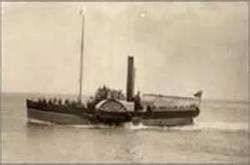
Legend Of The Iron Mountain
There is a story told by folks along the Mississippi River about the riverboat Iron Mountain that steamed north from Vicksburg, Mississippi with a deck cargo of bailed cotton and barrels of molasses and was never seen again. The Iron Mountain was a steamboat, but not a traditional riverboat. She was a towboat with the job of pulling barges up and down the river. Her destination that day on March 25, 1882 was Pittsburg and her cargo more likely included rice or maybe grain.
There is a story told by folks along the Mississippi River about the riverboat Iron Mountain that steamed north from Vicksburg, Mississippi with a deck cargo of bailed cotton and barrels of molasses and was never seen again. The Iron Mountain was a steamboat, but not a traditional riverboat. She was a towboat with the job of pulling barges up and down the river. Her destination that day on March 25, 1882 was Pittsburg and her cargo more likely included rice or maybe grain.
